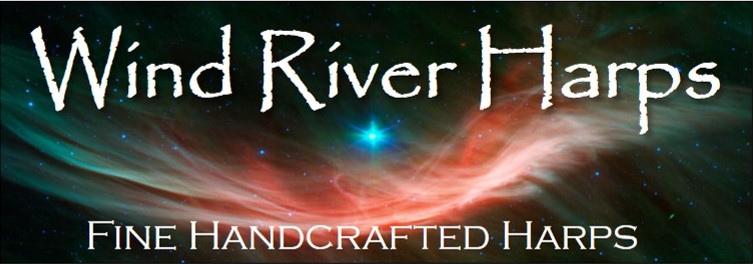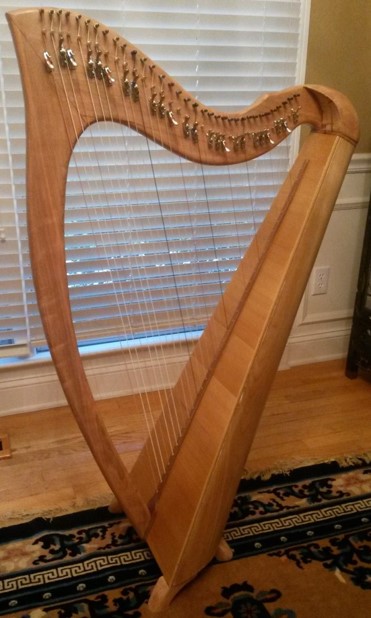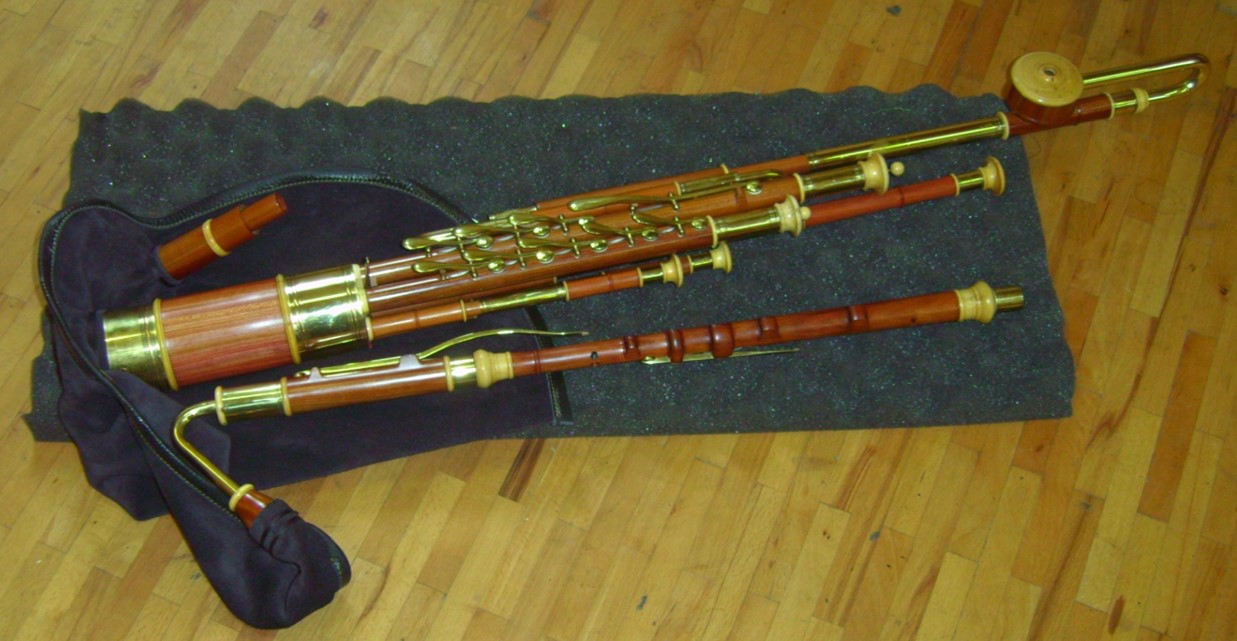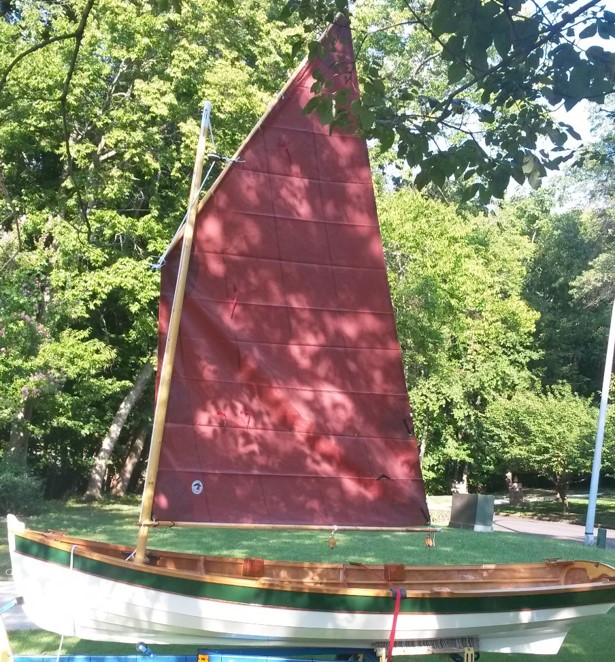The creation of a musical instrument, for me, is a combination of a labor of love, layered with a veneer of fear. The love is the desire to create something which others will want to use to manifest the music they have within them. The fear is that it may fall short of my expectations. Each harp I build is an alloy of these hopes and expectations. No harp comes out of my shop without meeting these expectations. Some portions in the creation of a harp are mechanical (the location and drilling of tuning peg and binding post holes), while others are subjective (the curve on the top of the neck, the shape of the knee, or the way the pillar and neck flow together). Mechanical characteristics are the same from harp to harp. The subjective parts may vary slightly to catch something in the grain of the wood. But mechanical and subjective must combine seamlessly in order to make a complete instrument. Each harp I build is shaped and constructed, from start to finish, by me; and a lot of me goes into each harp.
BACKGROUND
The first time I heard a lever harp, it was in the mid-1980’s, and was played by an excellent local harpist, who now focuses primarily on the pedal harp. Through my interest in Irish and Scottish music (I also play the Uilleann Bagpipes, the Scottish Great Highland Bagpipes, Scottish Smallpipes, and the tin (penny) whistle), I had also heard recordings of harpists playing in solo or group settings (Grainne Hambly, Billy Jackson, and the late Derek Bell come to mind).
My daughter had a long-term desire to learn the harp, but I couldn’t see building from a kit. Several years passed, and at the 2018 Southeastern Pipers Tionol, I woke one morning after a very late night session, to the sound of an O’Carolan tune, well played. Thinking it was a recording, I wandered toward the sound. I found one of the tionol attendees playing a lever harp. We fell into a discussion on harp building, and he kindly offered that if I didn’t like any of the designs available as kits or plans, maybe I should get off my back end and design one of my own. He suggested making contact with a harp maker, to see what guidance might be offered. When I contacted a harpmaker seeking what they might share, I was presented with a wealth of knowledge and wisdom, generously offered, which has made my harp design possible.
I have been involved in music from an early age. At the age of eleven, I began learning the clarinet in the local school system’s band program. In school, I had a series of excellent band instructors, Robert Shuck, David Ward, and Jim Sparks. They instilled in me a drive to always look for ways to improve, and to work on problem areas until they become strengths. I went on to play clarinet in several symphony orchestras, alto and tenor sax in big bands, reed parts in several Broadway shows, and with well-known names in show business. I have been playing the tin whistle for donkeys years, and began learning the uilleann pipes twenty-four years ago.
I received kind complements on the sound of the prototype harp (shown on the right) from several harpists at the 2019 Swannanoa Gathering Celtic Week, and have received many more compliments on subsequent harps. I continue to make changes and refinements to improve quality, sound, look, and the player experience. Instead of reading my description of their responsiveness, voice, and comfort in playing, ask someone who plays one.
A few soundclips of me on the Great Highland Bagpipes (for the brave):
Mairi's Wedding
Gin I Were A Baron's Heir
Scots Wa Hae
Scotland the Brave

 The Prototype
The Prototype
